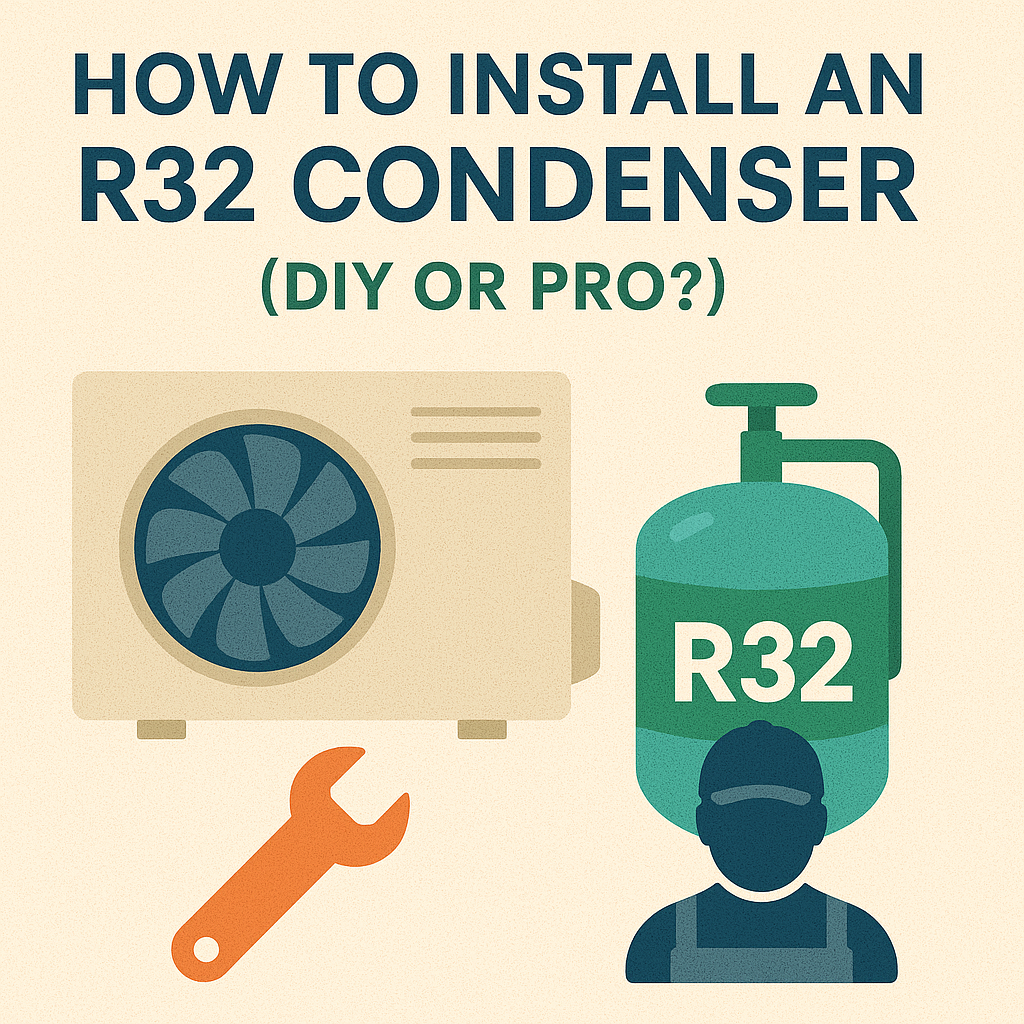🧯 1. R32 Is Mildly Flammable (That Matters for Installers)
R32 is classified as A2L — which means low toxicity but mild flammability. That’s a major shift from R410A, which is non-flammable (A1).
What changes?
-
You need A2L-rated tools and leak detectors
-
System components must meet UL 60335-2-40 standards
-
Ventilation, clearances, and safety labels are now code-mandated
📚 Source:
“This isn’t plug-and-play. The safety codes alone are a full page longer than they were five years ago.”
🧰 2. What DIYers Can (and Can’t) Do
Most states and manufacturers recommend R32 systems be installed by a certified HVAC professional. But if you’re determined to DIY, here’s what you need to consider:
✅ DIYers Can Usually:
-
Mount the outdoor condenser pad and brackets
-
Install wall sleeves or pre-run electrical
-
Set up basic wiring (if within code)
-
Replace an old line set (if properly flushed and rated)
❌ DIYers Cannot:
-
Legally handle refrigerants without an EPA 608 Certification
-
Open or charge the refrigerant circuit
-
Retrofit R410A systems to accept R32
-
Skip vacuuming, pressure tests, or leak verification
📚 Source:
“If you don’t have a 608 card and R32-rated gauges, step away from the lineset, my friend.”
🔧 3. Why Pro Installation Matters for R32 Units
Here’s what licensed HVAC techs bring to the table:
-
A2L compliance knowledge (ventilation clearances, safe charging)
-
SEER2 system pairing and commissioning
-
Proper brazing and leak detection
-
Warranty protection — most brands void warranty without pro install
📚 Source:
“An improperly charged system doesn’t just run bad — it runs hot, leaks early, and could be dangerous.”
🧾 4. Warranty, Permits & Legal Considerations
-
Warranty: Most manufacturers (Goodman, Daikin, etc.) require licensed installation and AHRI-matched systems
-
Permits: Required in most cities when working with flammable refrigerants
-
Inspection: Your system may be subject to final review from a local authority having jurisdiction (AHJ)
📚 Source:
“Cutting corners can kill your warranty and break local laws. That’s not just risky — it’s expensive.”
✅ So Should You DIY?
Here’s a quick test:
| If You... | Then... |
|---|---|
| Have EPA 608 + A2L training | ✅ You might handle install safely |
| Are replacing an R410A unit | ❌ R32 ≠ retrofit compatible |
| Want manufacturer warranty | ✅ Use a licensed HVAC pro |
| Are unsure about clearances, charging, or permits | ❌ Hire it out — it’s worth it |
“R32 isn’t hard to work with — but it is different. If you’re not trained up, bring in someone who is.”
👇 Want Help Getting It Done Right?
We can connect you with installers who understand R32 systems — or help you select fully matched, pre-charged, and code-compliant equipment.
🔗 Explore R32 Condensers for Pro Installers »
In the next topic we will read about: Can You Retrofit Your Old System to Use R32?







